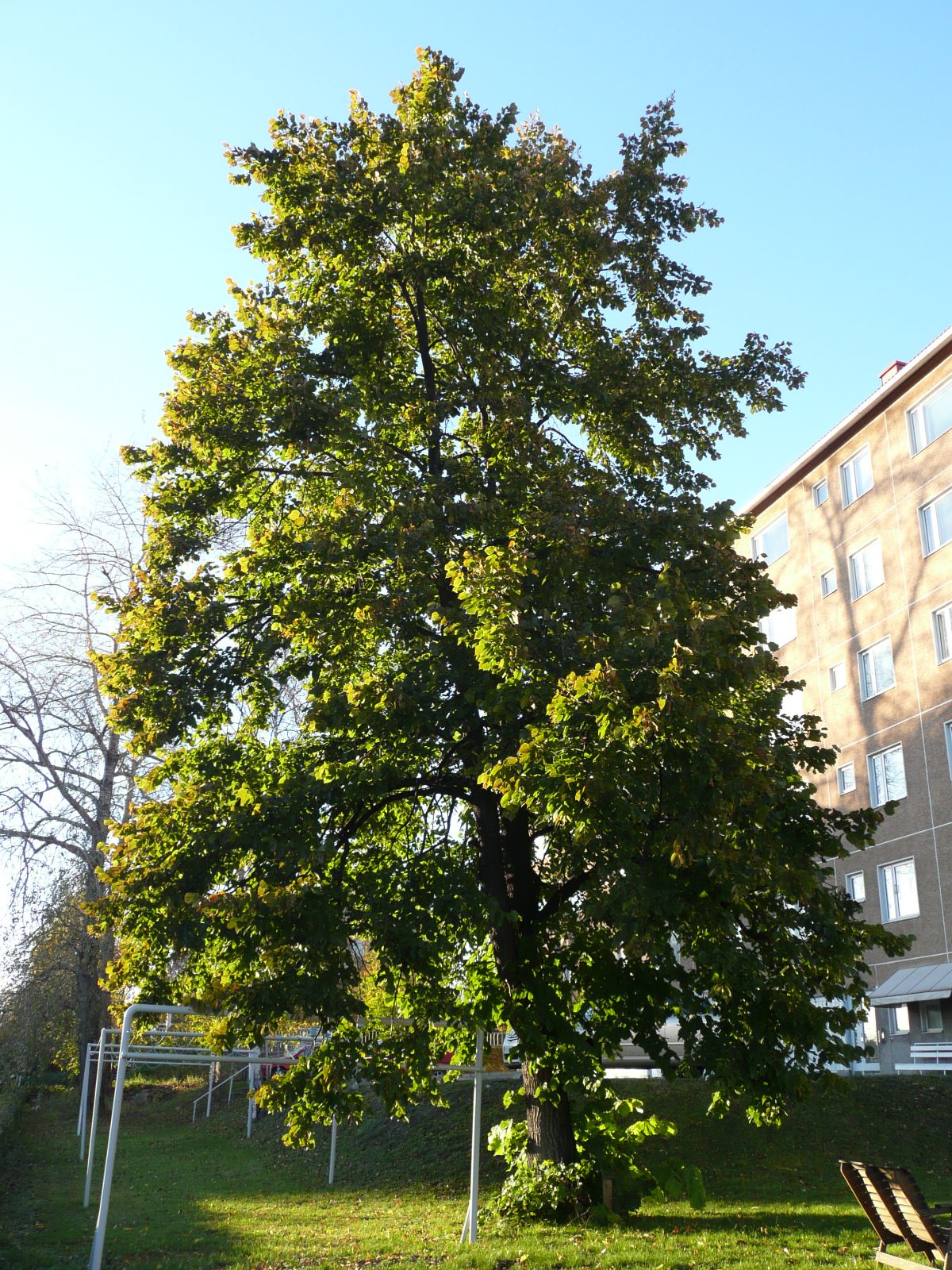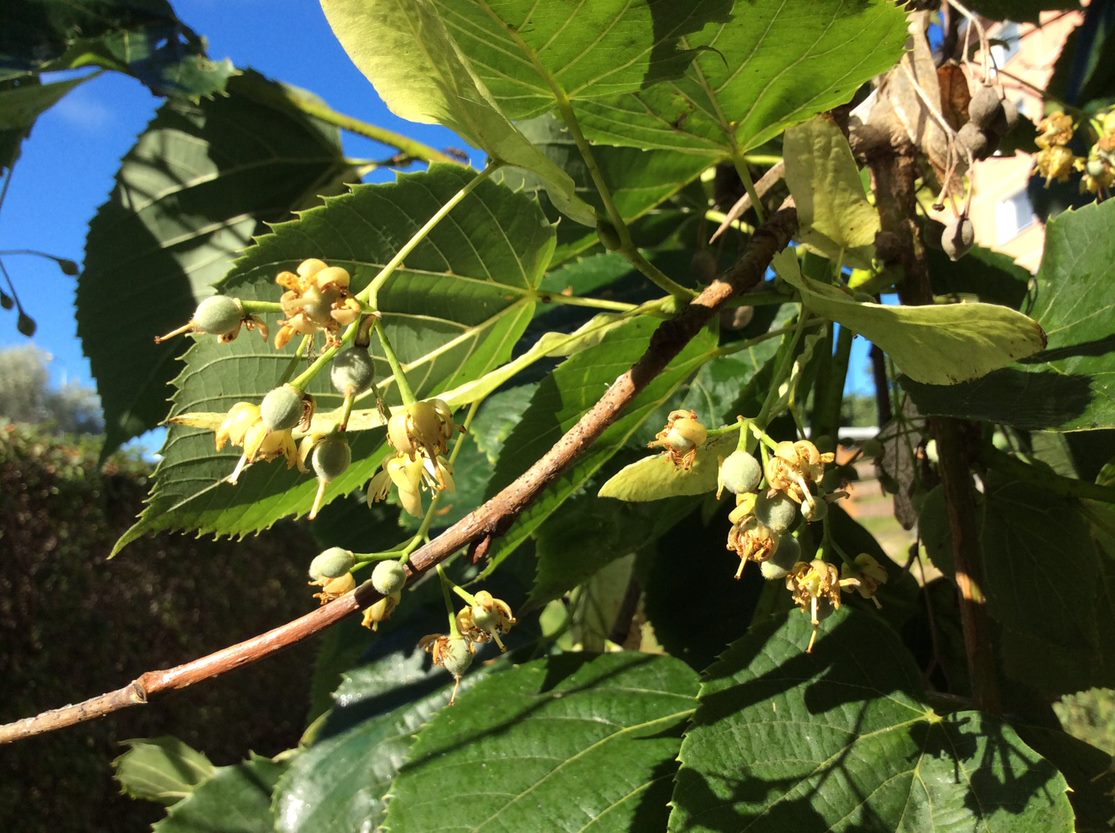Tilia × flaccida
Sponsor
Kindly sponsored by
a member of the International Dendrology Society
Credits
Owen Johnson & Julian Sutton (2020)
Recommended citation
Johnson, O. & Sutton, J. (2020), 'Tilia × flaccida' from the website Trees and Shrubs Online (treesandshrubsonline.
Genus
Synonyms
- Tilia × carlsruhensis Simonk.
Infraspecifics
Other taxa in genus
- Tilia americana
- Tilia amurensis
- Tilia callidonta
- Tilia chinensis
- Tilia chingiana
- Tilia concinna
- Tilia cordata
- Tilia dasystyla
- Tilia endochrysea
- Tilia × euchlora
- Tilia × europaea
- Tilia × flavescens
- Tilia Hanwell Hybrids
- Tilia 'Harold Hillier'
- Tilia 'Harvest Gold'
- Tilia × haynaldiana
- Tilia henryana
- Tilia japonica
- Tilia × juranyana
- Tilia kiusiana
- Tilia mandshurica
- Tilia maximowicziana
- Tilia miqueliana
- Tilia mongolica
- Tilia nobilis
- Tilia × noziricola
- Tilia oliveri
- Tilia paucicostata
- Tilia platyphyllos
- Tilia tomentosa
- Tilia tuan
- Tilia 'Westonbirt Dainty'
A hybrid, intermediate in features between its parents T. americana and T. platyphyllos.
Habitat A hybrid found only in cultivation.
USDA Hardiness Zone 3-7
RHS Hardiness Rating H7
Hybrids of Tilia platyphyllos (Broad-leaved Lime) and T. americana (Basswood) are liable to occur whenever both species are grown together in areas with warm summers. The cross was first described in 1862 from a tree in the Vienna Botanic Garden (Pigott 2012). A very vigorous tree of 19 m × 74 cm dbh in 2017 was apparently planted as T. × flaccida in 1957 in the Freundschaftsinsel Park, Potsdam, Germany (monumentaltrees.com 2018). Ari Hyvärinen (pers. comm. 2021) reports that he grows T. × flaccida successfully in Oulu in northern Finland (65°N, 25°E) and that it is also grown in Helsinki.
In addition to the cultivar described below, Heinze (2004) showed that trees with hybrid features such as rudimentary staminodes were widespread as younger plantings in Germany; at least some of these had been supplied under the name T. americana ‘Nova’ (q.v.). This might imply that ‘Nova’ belongs here, but does not preclude the possibility that those examples were wrongly named. We have not examined stock of ‘Nova’ for this account. Krüssmann (1984) describes ‘Diversifolia’ as a slender, upright tree with variably dissected leaves.
A lime in this genus collection at the Royal Botanic Gardens, Kew, was sourced from Smith of Worcester in 1882 as Tilia platyphyllos ‘Obliqua’. This tree presumably provided the basis for W.J. Bean’s discussion of this taxon (T. platyphyllos var. obliqua (Host) Simonkai; T. obliqua Host) (Bean 1981), in which such trees are said to have been common in the gardens of Central Europe a hundred years ago; it is not suggested that they represented a single clone. The Kew example has a slightly weeping habit, and it is certainly possible to interpret the obliquely truncate leaf-base and distinctively dark and slightly greyish-green underside of the leaf (with its small, neat axillary tufts) as evidence of the hybridisation of a central European form of T. platyphyllos with T. americana: this tree could in fact easily be confused with the small-leaved clone of T. americana described here as ‘Pendula’ (q.v.), but is quite distinct from the slightly weeping, downy-leaved forms of T. platyphyllos which probably represent the old form ‘Pendula’. W. J. Bean also describes the floral bracts of var. obliqua as stalked (Bean 1981), another pointer to an influence of T. americana. A very similar tree in the Royal Botanic Garden Edinburgh, accessioned in 1903, is meanwhile labelled as T. × europaea ‘Pendula’ (a name otherwise encountered only at the National Botanic Garden at Glasnevin, Ireland; the Glasnevin tree has not been examined by the authors, while the leaf shape and the details of the axillary tufts make T. × europaea an unlikely identification for the Edinburgh one). Matthew Ellis has a scion of the Edinburgh specimen in his Grange Farm Arboretum in Lincolnshire, purchased around 2010 under the name Tilia ‘Edinburgh Weeping’ (O. Johnson pers. obs.). Two large old trees in the Flaybrick Memorial Gardens in Birkenhead, Cheshire (opened as a cemetery in 1864) may also represent the same clone and are also grafted at head-height; in 2018 these were 15 m × 92 cm dbh and 18 m × 86 cm dbh (Tree Register 2020).
'Odin'
A broad-crowned tree, the original 20 m tall and generally resembling T. platyphyllos, with light green leaves to 11 cm long and inflorescences with 2–7 flowers. Selected at the Holbaek Park, Denmark in 1995, it is marketed as a hardy street tree for Scandinavia as part of the Norðîc® range (Jablonski & Plietzsch 2014; A-plant 2000 (2017)).




